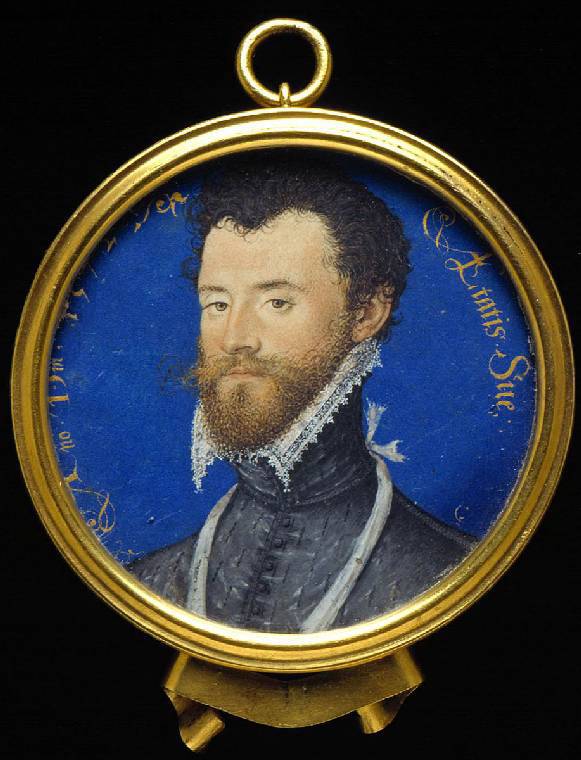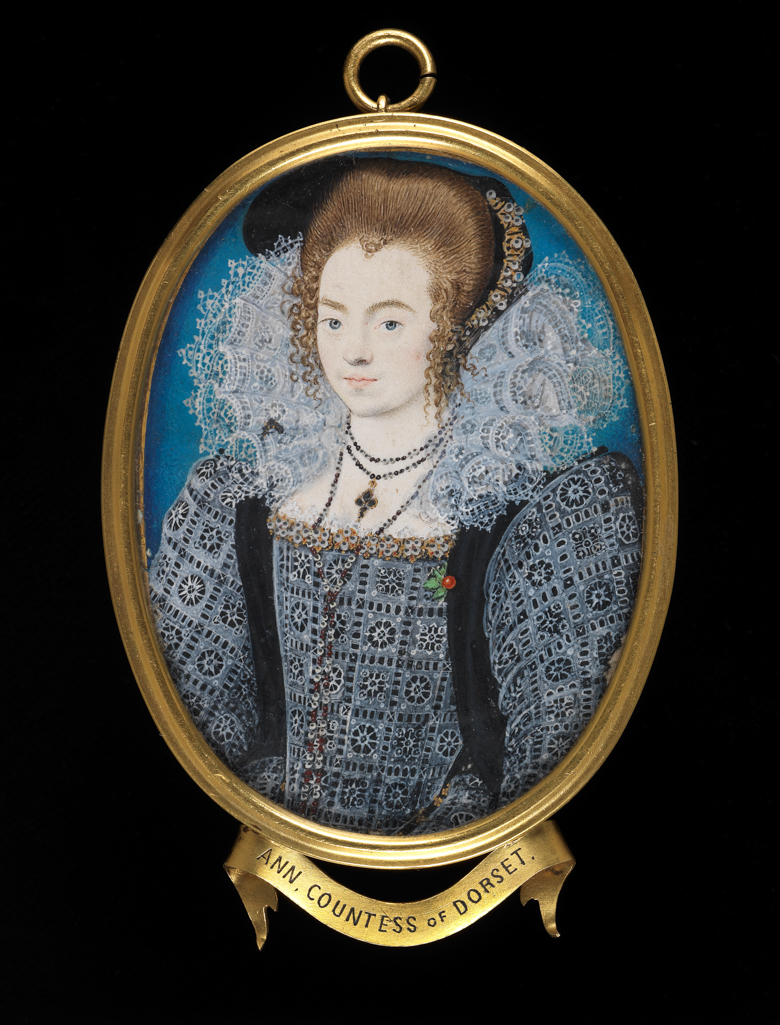Henry Wriothesley, third earl of Southampton

A hand or an eye By Hilliard drawn is worth an history
By a worse painter made...
John Donne, The Storm, 1597
As John Donne's admiring lines imply, Nicholas Hilliard was the dominant figure in British painting during the latter part of the sixteenth century. The favourite artist of Elizabeth I, he painted many of the leading personalities of the day – Sir Francis Drake, Sir Walter Ralegh, Sir Philip Sidney – as well as many other aristocrats whose names have not survived, such as the man illustrated below [3899].

He also portrayed Elizabeth herself several times. The Fitzwilliam owns a particularly fine portrait medal of the Queen, right, made by Hilliard to commemorate the famous English victory over the Spanish Armada in 1588.
Hilliard is credited with perfecting the art of miniature painting in England. In the 1590s he wrote a treatise, The Arte of Limning, in which he extols 'painting in little ... which excelleth all other painting whatsoever', and details his techniques. The word 'limning' was originally used to describe the art of manuscript illumination in the middle ages, the tradition from which small-scale Renaissance portraiture developed.
The book is a fascinating document, brimming with useful and amusing details of life in the portraitist's studio. Conscious of the potential for boredom during long sittings, the author recommends 'discreet talk or reading, quiet mirth or music, to shorten the time and quicken the spirit, both in the drawer and in he who is drawn'. At another point he warns the painter, 'to take heed of the dandruff of the head'.
This portrait of Henry Wriothesley is painted on vellum, mounted on a playing card and set into a gold locket. The ring at the top suggests that it would have once been worn on a chain around the neck, although the present setting is not original. It illustrates well the qualities for which Hilliard is celebrated. The detail of the clothing is particularly fine – look at the floral embroidery on the lace collar, the black sequinned doublet. Just as good is the gold calligraphy that records in Latin the date of the painting and the sitter's age – 20. It is no surprise to learn that as a young man Hilliard had trained as a jeweller.
This was an artist who believed passionately in the beauty of the English face. In The Arte of Limning he wrote 'rare beauties are, even as the diamonds are found among the savage Indians, more commonly found in this isle of England than elsewhere', and he has bestowed upon the earl of Southampton a delicate, almost feminine grace with which the poetic and adventurous young man was, one imagines, well pleased.

Look at the soft, pink lips, the pale, even complexion, the delicately arching eyebrows and the long, curling, light brown hair: the same features can be found upon Hilliard's paintings of the women of Elizabeth's court, such as that illustrated above [3898].
Henry Wriothesley was a patron of William Shakespeare, and, in the same year that this portrait was painted, the great poet lovingly dedicated his long poem The Rape of Lucrece to the young man. It has been persuasively argued that Wriothesley is the mysterious 'Mr W.H.', the dedicatee of Shakespeare's Sonnets. More controversially, he has been identified as the 'fair youth' for whom the poet expresses such passion in the early poems. Is there, behind this delicate, aristocratic gaze, behind the careful coiffure and pale blue eyes, the inspiration for some of the greatest, most enigmatic love poetry ever written?
Themes and periods
Data from our collections database
? C. Sackville Bale; ? J. Whitehead 1889; L.D. Cunliffe
Acquisition and important dates
- Method of acquisition: Bequeathed
- Dates: 1937
Dating
- 1590s
- Production date: AD 1594
Maker(s)
- Hilliard, Nicholas Miniaturist
Materials used in production
Read more about this recordStories, Contexts and Themes
Other highlight objects you might like
Suggested Curating Cambridge products
Sign up to our emails
Be the first to hear about our news, exhibitions, events and more…








